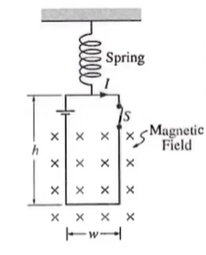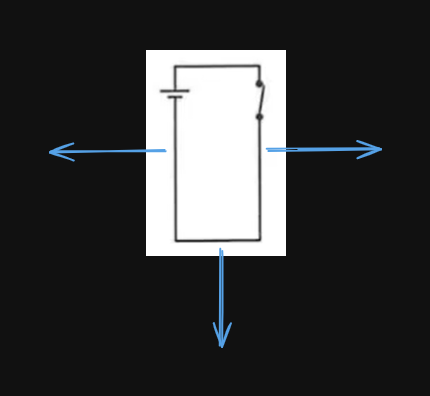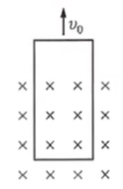We will use Newton’s Second Law, Faraday’s Law, and Lenz’s Law to analyze a conductive Bar’s Motion on rails.
The loop of wire below has width 
Question
a) Indicate the direction of the magnetic forces that act on each side of the loop.

Question
b) The switch is opened and the loop eventually comes to rest at a new equilibrium position that is a distance
from its former position. Derive an expression for the magnitude of the uniform magnetic field in terms of the given quantities and fundamental constants.
Since the loop has come to rest, the net force must be zero. So, the spring force and magnetic force must be equal (we say gravitational is negligible)
The spring and loop are replaced with a loop of the same dimensions and Resistance 
Question
c) Indicate the direction of the induced current in the loop as the loop moves upward.
If we are pulling the loop up, then the area
Question
Derive an expression for the magnitude of this current.
We can use Faraday’s Law:
Question
d) Derive an expression for the power dissipated in the loop as the loop is pulled at constant speed out of the field.
Power is
Question
Suppose the magnitude of the magnetic field in increased. Does the external force required to pull the loop at speed
increase, decrease, or remain the same?